Grades: BWI's Mid-Season Report Card
Following the first six games of Penn State's season, after which it sits 4-2, Blue White Illustrated combs through the performances of each position and offers our mid-season grades.
QUARTERBACK
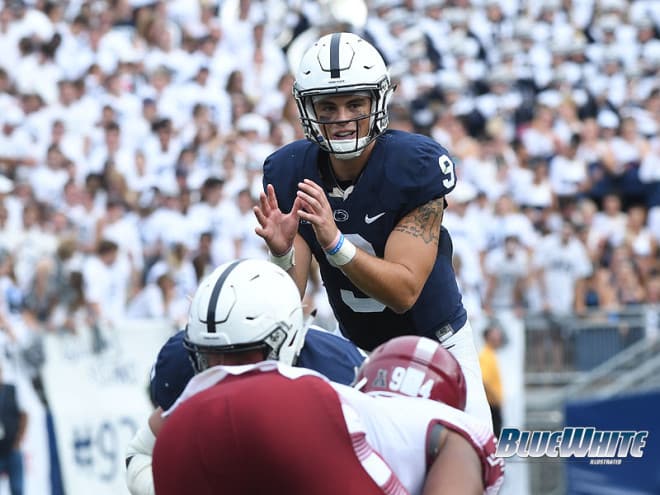
There was never any chance that redshirt sophomore Trace McSorley was going to replicate his eye-opening 23-for-27 performance in the Blue-White Game once the offense began taking live fire in the regular season. But darned if he hasn’t come fairly close.
Through six games, McSorley was ranked third in the Big Ten in passing, with an average of 239.3 yards per game, along with a 58.2 percent completion rate and a touchdown-interception ratio of 8-3. He was also Penn State’s second-leading rusher with 186 yards and three touchdowns on 67 carries.
After absorbing some big hits early in the season (resulting in some costly turnovers), McSorley began to look much more comfortable in the pocket against Minnesota, sensing the rush, keeping his eyes downfield and making big plays when opportunities presented themselves. His quick maturation was never more evident than in Penn State’s 29-26 overtime victory over the Gophers. With less than a minute to play and no timeouts to work with, McSorley engineered the tying drive.
GRADE - B+
RUNNING BACK
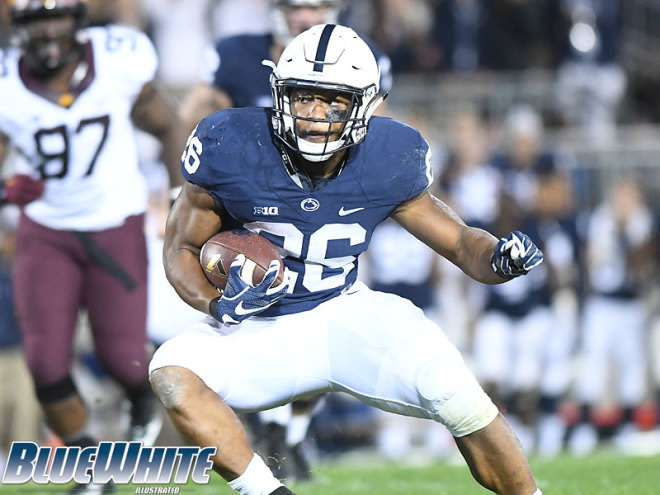
Prior to facing Maryland in week six, Penn State hadn’t been able to generate the kind of rushing offense that many had expected going into the season. With a potential All-Big Ten running back returning in sophomore Saquon Barkley, there were hopes that the Lions would take a big step forward after finishing last in the Big Ten in rushing two years ago and 12th in 2015.
Through the season’s first five weeks, that hadn’t happened. Penn State was ranked last in the conference in rushing with an average of 108.2 yards per game, and Barkley was averaging only 76 yards. The Maryland game was an entirely different story, however, as both Barkley (202 yards on 31 carries) and McSorley (81 yards on 18 carries) found ample running room. But even after that breakthrough performance, the Lions were 12th in the conference in rushing at 152.2 yards per game.
Barkley did have a couple of decisive touchdowns, scoring a 55-yarder to help Penn State finish off Temple and a 25-yarder in overtime to beat Minnesota. So even in the team’s first five games, the running game had its moments.
GRADE - B
RECEIVER
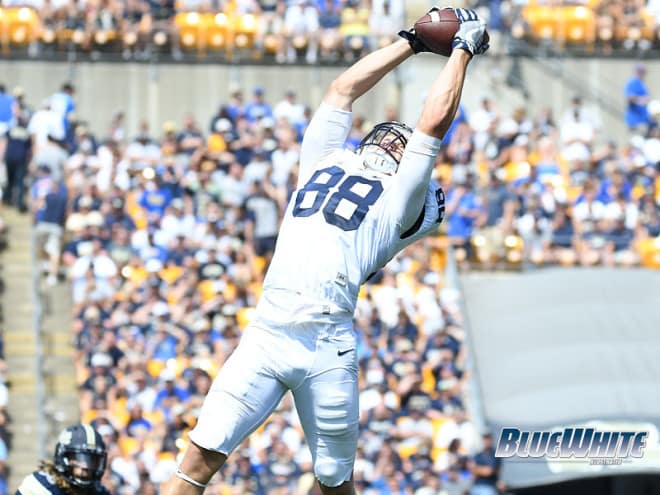
It’s unfortunate that this group’s most memorable moment came late in the Pitt game when DaeSean Hamilton couldn’t hold onto a deep pass that would likely have resulted in a go-ahead touchdown and possibly completed a comeback for the ages. It’s unfortunate because, that drop notwithstanding, this group has been pretty solid.
The key here has been the unit’s depth. Heading into the Ohio State game, there were four players with 18 or more catches. As expected, Chris Godwin was leading the team with 23 catches for 325 yards through six games, while tight end Mike Gesicki also had 23 receptions for 277 yards. Hamilton and rising star DeAndre Thompkins both had 18 catches, and Thompkins’ average of 18.2 yards per catch was by far the team’s best among players with more than one catch. The Lions have also gotten big receptions from Juwan Johnson and Irvin Charles. So deep is this group that it was able to withstand the loss of starter Saeed Blacknall and key backup Brandon Polk to injuries without any real drop-off in productivity.
GRADE - B
OFFENSIVE LINE
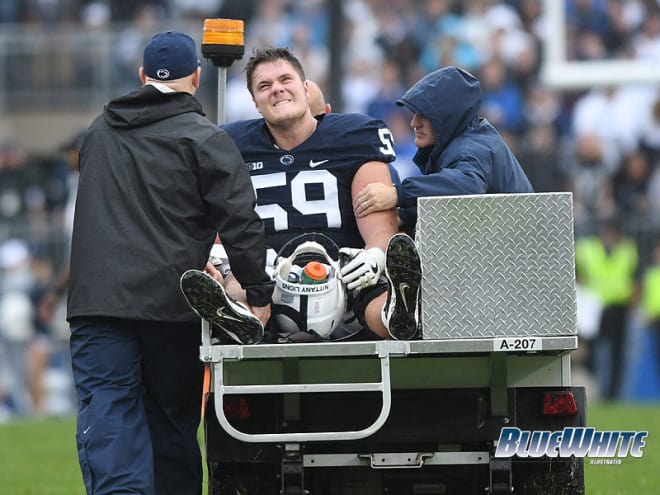
The Lions are starting two freshmen at guard in Connor McGovern and Ryan Bates, and two of their returning starters – redshirt junior tackle Brendan Mahon and senior center Brian Gaia – are playing new positions. The main holdover from last year’s starting five has been redshirt junior right tackle Andrew Nelson, and he went down with a season-ending knee injury in week six against Maryland. Because of that upheaval – and because opponents have been stacking the box to shut down Barkley – the Lions remain one of the least-productive rushing teams in the Big Ten.
Still, the changes appear to have put Penn State on a good long-term path. And there have already been signs of improvement. The most significant was that victory over the Terps in which PSU racked up 372 yards on the ground, but there’s also this: Through six games the Lions had given up 14 sacks, only four more than they surrendered in their first game last season. McSorley can take some of the credit for that; he’s a lot more mobile than Christian Hackenberg. But you would like to think that the line had something to do with it, too. And with that in mind…
GRADE - C
DEFENSIVE LINE
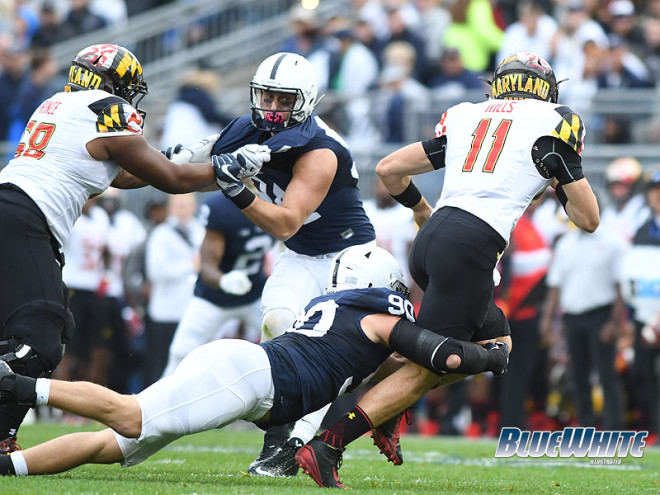
This unit entered the bye week riding high after a strong performance against Maryland – a performance in which the Terps were held 130 yards below their per-game rushing average. Defensive ends Garrett Sickels and Evan Schwan played arguably the best games of their respective careers, and redshirt freshman linemen Kevin Givens and Shareef Miller were disruptive in a way that they hadn’t been since the season opener against Kent State.
In an attempt to avoid recency bias, however, let’s bear in mind that before the Maryland romp, this unit had taken a step back due to the departure of four NFL-bound players.
Pitt pushed the Lions around in week two, Michigan totaled more than 300 yards on the ground and its quarterback wasn’t sacked once in week four, and Minnesota went for over 220 in week five. Heading into its bye, Penn State ranked 12th in the Big Ten in rush defense, allowing 208.8 yards per game. But, as evidenced by the Maryland game, there are reasons for optimism looking ahead to the second half of the season as this deep unit gains more experience. Through six games, PSU ranked second in the Big Ten in tackles for loss. It also ranked third in sacks, even though no individual ranked in the top 10. Which means that the Nittany Lions need someone to separate from the pack. Who’s that going to be? How about Torrence Brown? Only one other player in the Big Ten has forced more fumbles, and he was leading this unit with 18 tackles including four tackles for loss.
GRADE - C+
LINEBACKER
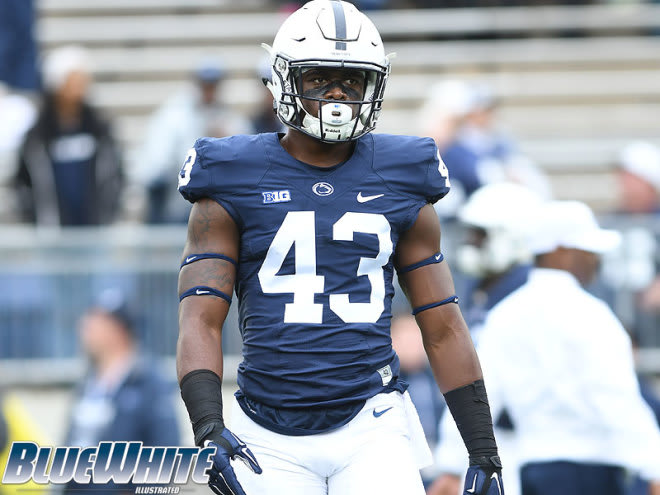
James Franklin emphasizes the point every chance he gets: This unit has been ravaged by a wave of injuries that is unlike anything he has seen in his two-decade-plus coaching career. That being the case, we’re going to give a deferred grade. The list of injured players, arranged according to the date of their exits, is as follows: Jason Vranic, Jason Cabinda, Brandon Bell, Nyeem Wartman-White, Jan Johnson and Jake Cooper. Even former walk-on Brandon Smith, who has been a hero in relief this season, has missed action due to an injury and also because of a targeting penalty at Michigan that the Big Ten later admitted was issued in error.
While there have been many glimmers of hope, including sophomore Manny Bowen’s gradual rise, true freshman Cam Brown’s flashes and Smith’s early storyline, the continual misfortune this group has suffered lately can’t help but spill over to the field. Where it shows most is in the big plays. Only one other team in the Big Ten has allowed more chunk plays (gains of 10-plus and 20-plus yards), and a lot of that has to do with the inability of the young LBs to track down the play and put themselves in position to make the initial tackle. Penn State’s leading tacklers are its two safeties.
GRADE - Incomplete
DEFENSIVE BACK
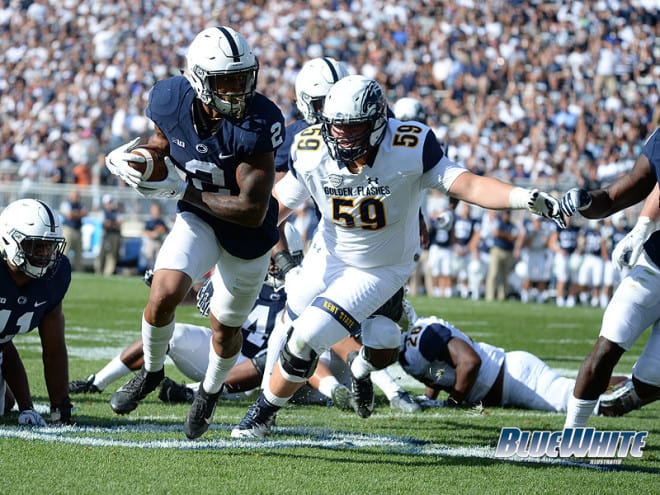
They would probably like to have more turnovers to their name, as Malik Golden and John Reid are the only two regular starters with an interception thus far. But other than that, you’ve really got to nitpick with this group. Golden has come on strong his senior year, and he had a career game in the overtime victory against Minnesota. Reid has been his sturdy self, and the same goes for Grant Haley when he’s been healthy. The other cornerbacks have made important plays in limited time, as Jordan Smith and Amani Oruwariye both have interceptions, while Christian Campbell might have been playing the best football of his three seasons before getting hurt in week six.
The developing star here is Marcus Allen, who leads the Big Ten with 9.5 tackles per game, including 30 solo stops. Allen gets a lot of flak for his tackling style, and while he might have missed a few here and there, especially earlier in the season, he makes them at a higher rate than anyone in the league. Another thing to keep in mind: It isn’t so easy playing safety at 6-foot-2 at a time when targeting penalties and ejections have become a point of emphasis for officials. Low might be the way to go.
GRADE - B
SPECIAL TEAMS
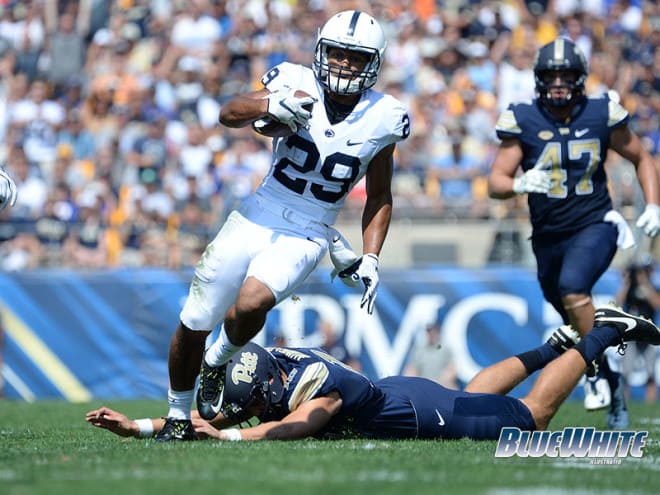
Penn State’s special teams have been better in nearly every way this season. That’s not to say that the Nittany Lions have been great in every facet of the kicking game; in some facets, they’ve merely been adequate, ranking 10th in the Big Ten in kick-return average and 12th in punt-return average. But adequacy is itself an improvement after the Lions finished at or near the bottom of the conference in multiple statistical categories in 2014 and ’15.
During the first half of the season, the Nittany Lions didn’t miss a field goal or PAT. They improved their net punting average over last year and got a few nice punt returns from Reid. And although he didn’t break any big ones, Miles Sanders showed some potential as a kick returner, provided his ball-security concerns don’t persist.
The star of the first six games was Tyler Davis, who remained perfect in his college career, hitting 10 of 10 field goal attempts, including his most pressure-packed kick to date, a 30-yarder that sent the Minnesota game to overtime. Meanwhile, the Lions’ other kicker, Joey Julius, made an impact as well. Twenty-one of his first 37 kickoffs were not returned, and on two of his kicks that were brought back, the opposing return specialists probably wished they had just taken a knee in the end zone, as Julius flattened them. Suffice it to say, he’s a bit more aggressive than your typical kicker.
Another standout has been freshman punter Blake Gillikin, whose average of 42.3 yards per attempt has solidified one of Penn State’s big weaknesses the past two years.
GRADE - B